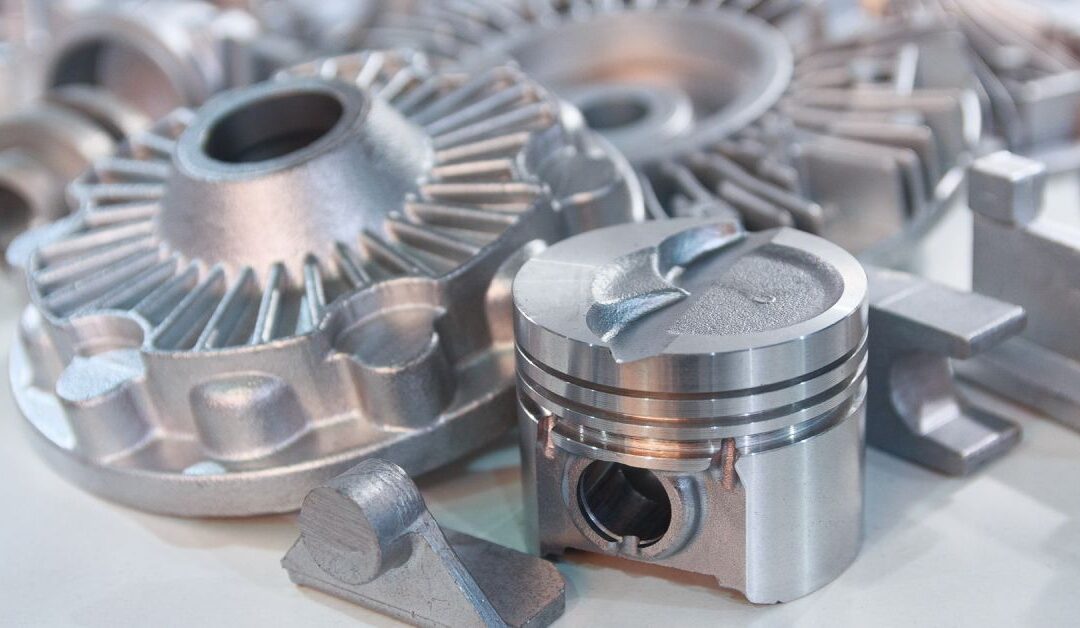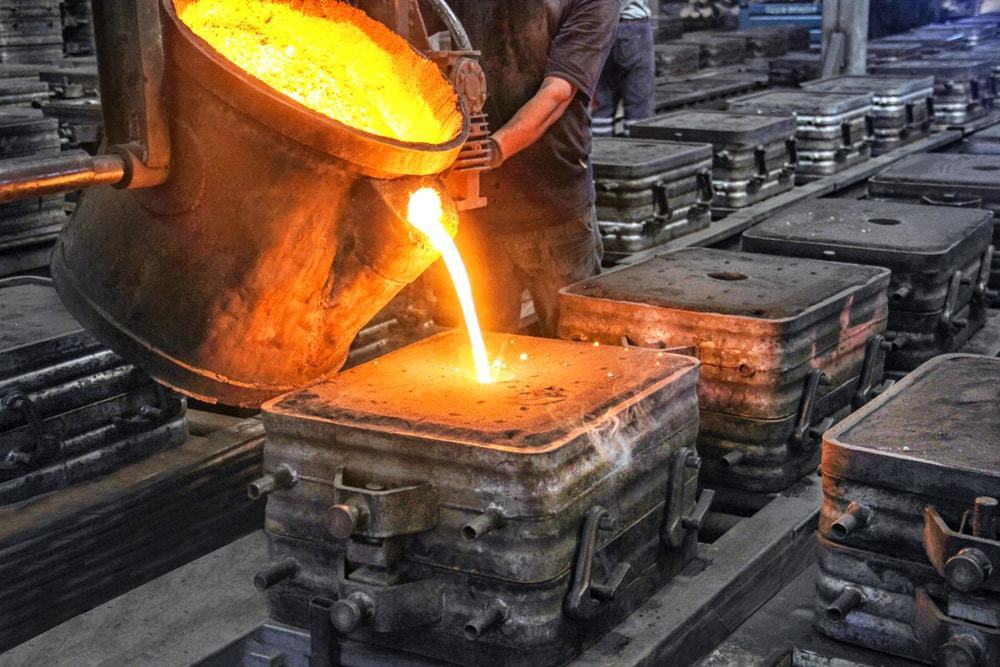Recognizing the Metal Castings Refine: A Comprehensive Overview for Beginners
The Metal Casting procedure is a basic method in manufacturing that changes molten steel right into strong types. Newbies have to understand the various techniques included, such as sand spreading and pass away casting. Recognizing the products, design principles, and safety steps is equally essential. Each element plays a crucial function in accomplishing effective outcomes. As one browses these details, the inquiry of exactly how to optimize each step for improved outcomes ends up being significantly relevant.
The Fundamentals of Metal Casting
Although Metal Casting has actually developed over centuries, its fundamental principles stay regular and integral to the production procedure. At its core, Metal Casting includes the improvement of molten metal into strong items with numerous techniques. The procedure begins with the creation of a mold, which specifies the form of the last product. When the mold and mildew is prepared, steel is heated up to its melting factor and put into the dental caries. After cooling, the steel strengthens, taking the form of the mold.
There are a number of casting approaches, including sand casting, financial investment casting, and die spreading, each with one-of-a-kind advantages and applications. The option of method depends upon aspects such as production volume, product kind, and wanted precision. As soon as cast, the final product may undertake additional procedures like machining or surface area treatment to attain the required surface and specifications. Recognizing these fundamentals is essential for any person thinking about the field of Metal Casting.

Comprehending Products Made Use Of in Steel Casting
Products play a necessary duty in the Metal Casting procedure, influencing the end product's residential properties and efficiency. Various metals are utilized, consisting of light weight aluminum, steel, bronze, and iron, each offering unique characteristics matched for particular applications. Aluminum is corrosion-resistant and lightweight, making it optimal for auto components. Iron, particularly cast iron, is preferred for its superb wear resistance and resilience. Steel supplies high strength and flexibility, commonly made use of in hefty machinery components. Bronze, known for its rust resistance and machinability, is generally utilized in aquatic applications.
Along with the metals, numerous casting materials, such as sand, plaster, and ceramic, are made use of to develop molds. Sand spreading, one of the most common technique, makes use of silica sand because of its thermal security and capacity to develop complex forms. Plaster and ceramic mold and mildews use finer details but might call for more complex processes. The selection of materials directly affects the effectiveness, expense, and quality of the casting operation.
The Layout Refine: From Idea to Blueprint
The layout procedure in Metal Casting begins with the initial concept advancement, where concepts are created and examined. This is complied with by the application of CAD modeling techniques, permitting for specific visualizations of the style. Finally, the plan finalization actions ensure that all specifications are accurately recorded for production.
Preliminary Concept Advancement
Preliminary concept growth notes an essential phase in the Metal Casting process, where concepts change right into concrete styles. During this stage, designers team up with designers and stakeholders to brainstorm and refine first principles. They think about factors such as functionality, aesthetic appeals, and manufacturability, ensuring that the style satisfies the needed specs and efficiency standards. Sketches and harsh drafts are developed to visualize the ideas, enabling initial assessments of expediency and cost-effectiveness. This phase also includes recognizing materials and prospective spreading techniques that align with the style objectives. Eventually, initial principle development lays the groundwork for a thorough blueprint, assisting the subsequent phases of the casting process and making sure an effective shift from idea to truth.
CAD Modeling Techniques
Changing principles right into exact designs, CAD modeling strategies play a pivotal duty in the Metal Casting procedure. These techniques utilize advanced software application to produce detailed three-dimensional models that accurately reflect the intended product. By employing tools such as parametric modeling, strong modeling, and surface area modeling, developers can adjust dimensions and forms with ease. CAD systems likewise facilitate simulation and analysis, permitting the recognition of potential problems prior to manufacturing starts. This proactive technique reduces material waste and enhances the style for manufacturability. In addition, CAD designs can be conveniently customized, allowing quick iterations based upon comments. Fundamentally, CAD modeling acts as the backbone of the design procedure, bridging the void between initial ideas and the ultimate production-ready styles.
Blueprint Finalization Steps
Adhering to the creation of in-depth CAD designs, the following phase includes plan completion, which is crucial in converting digital styles into workable strategies for production. This process begins with examining the CAD versions for accuracy and compliance with requirements. As soon as confirmed, the dimensions, tolerances, and material specs are diligently detailed to assure clarity. Incorporating notes and comments helps communicate crucial details pertaining to casting processes, surface finishes, and setting up needs. The completed plan undergoes an extensive approval procedure, often including collaboration with designers and manufacturing teams to resolve any kind of prospective issues. Alterations are made and approvals gotten, the blueprint is formally launched, offering as the fundamental document for the subsequent phases of Metal Casting, consisting of pattern making and mold design.
The Steel Casting Strategies Clarified

Metal Casting methods incorporate a selection of techniques utilized to shape molten steel into wanted types. These strategies vary according to the sort of product, complexity of the style, and manufacturing quantity. Sand spreading is among one of the most usual techniques, including the development of a mold and mildew from sand to hold the molten metal. Financial investment casting, or lost-wax casting, enables complex layouts by making use of a wax pattern that is melted away. Pass away casting utilizes high-pressure shot of molten steel right into a mold and mildew, suitable for mass manufacturing. Various other methods include irreversible mold and mildew casting, which uses recyclable mold and mildews, and centrifugal casting, where rotational pressures assist in filling up the mold and mildew. Each method has its applications and benefits, making it crucial for makers to select the appropriate method based upon their specific requirements and needs. Recognizing these strategies is important for any person involved in the Metal Casting procedure.
Finishing Procedures: Enhancing Your Casted Product

Completing processes play a vital role in enhancing the top quality and look of casted items. Various surface therapy techniques, such as sprucing up and finishing, are used to improve longevity and appearances. In addition, high quality assessment techniques assure that the end product fulfills specified requirements and performance demands.
Surface Therapy Techniques
A range of surface treatment methods play an essential duty in enhancing the quality and long life of casted items. These strategies consist of approaches such as shot blasting, brightening, and coating. Shot blasting successfully removes surface flaws, enhancing the functional and visual attributes of the casting. Polishing provides a smooth coating, which is particularly crucial for attractive applications and parts calling for very little rubbing. Layer strategies, such as electroplating or powder finish, offer extra defense against rust and wear, making sure toughness. Surface therapies can improve bond for succeeding procedures, such as paint or bonding. By utilizing these methods, manufacturers can attain premium surface area high quality, which is vital for the performance and life-span of Metal Casting in various applications.
Top Quality Inspection Methods
Effective high quality assessment approaches are crucial for assuring the integrity and efficiency of casted items after the completing procedures. Numerous methods are used to analyze the quality of Metal Casting, including aesthetic examination, dimensional checks, and the original source non-destructive testing (NDT) Visual assessment permits the identification of surface defects, while dimensional checks ensure that products meet specified resistances. NDT methods, such as ultrasonic testing and radiographic inspection, offer much deeper insights right into internal integrity without harming the castings. In addition, mechanical testing, such as tensile and hardness examinations, evaluates material buildings More Bonuses - Aluminum Foundry. By employing a combination of these approaches, suppliers can boost product high quality and dependability, eventually causing higher client contentment and lowered manufacturing costs
Security Considerations in Metal Casting
While the Metal Casting process uses many benefits, it also offers a variety of security threats that should be thoroughly taken care of. Workers in casting centers are exposed to heats, molten steels, and harmful products, which can bring about severe injuries if correct safety measures are not taken. Personal protective tools (PPE) such as heat-resistant gloves, encounter shields, and protective clothes is essential to reduce risks.
Furthermore, the visibility of fumes and dust necessitates proper ventilation systems to assure air quality - Metal Castings. Regular training on security protocols is necessary for all employees to recognize possible risks and respond properly. Emergency situation procedures ought to be established, consisting of fire safety measures and first aid availability. Maintenance of equipment and proper handling of materials better add to a more secure working atmosphere. By prioritizing these safety factors to consider, Metal Casting operations can shield their workforce and maintain efficient production procedures
Regularly Asked Concerns
What Are the Environmental Effects of Metal Casting?
Metal Casting can cause ecological impacts such as air and water contamination, resource depletion, and power intake. Furthermore, inappropriate waste administration and discharges from foundries add to ecological disturbances and health and wellness threats for close-by communities.
Exactly how Do I Select the Right Metal for Spreading?
To select the right steel for casting, one should consider elements such as mechanical buildings, rust resistance, thermal conductivity, and price. Assessing the designated application and environmental conditions is necessary for suitable option.
What Are the Usual Problems in Metal Casting?
Usual problems in Metal Casting include porosity, contraction, sand addition, and misruns. These issues commonly emerge from incorrect product option, insufficient style, or Going Here imperfections in the spreading procedure, influencing the last item's quality and efficiency.
Just How Can I Boost My Metal Casting Skills?
To improve Metal Casting skills, one need to exercise constantly, research study spreading methods, analyze previous tasks for problems, seek responses from experienced casters, and continuously try out various products and techniques to enhance efficiency and understanding.
What Is the Price of Beginning a Metal Spreading Organization?
Starting a steel casting company commonly calls for a preliminary financial investment of $5,000 to $50,000, depending upon equipment, products, and center costs. Factors like area and scale can significantly influence overall start-up costs.
The Metal Casting process is a basic technique in producing that transforms molten steel right into solid kinds. Newbies must comprehend the different techniques entailed, such as sand casting and die casting. There are a number of casting methods, consisting of sand spreading, investment spreading, and pass away casting, each with special advantages and applications. Financial investment casting, or lost-wax casting, permits for intricate designs by using a wax pattern that is thawed away. Other methods include long-term mold and mildew spreading, which uses reusable mold and mildews, and centrifugal casting, where rotational pressures assist in filling up the mold.